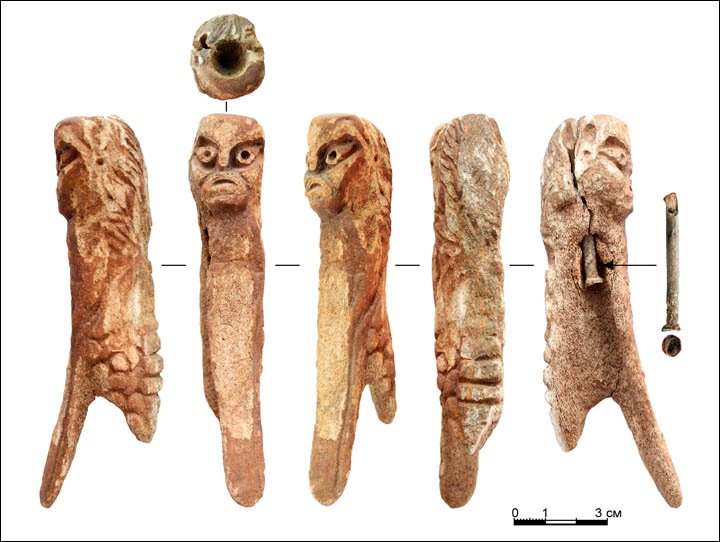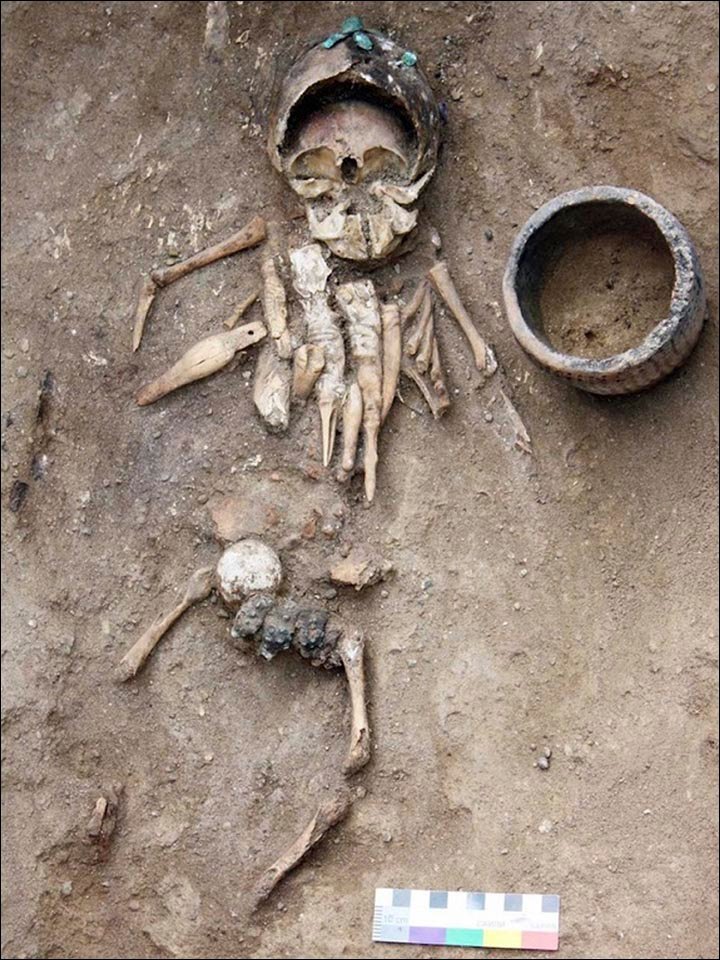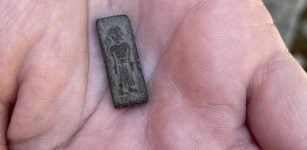Mysterious Okunev Culture And Their Unknown Ancient Pagan God
MessageToEagle.com – The Okunev people are seen as the Siberian ethnic grouping most closely related to Native Americans.
According to some experts, it was ancestors of the Okunevs who populated America, evidently using primitive boats to venture to the ice-covered Beringia land bridge some 12,600 years ago.
The mysterious ancient culture was ‘unparalleled’ in Siberia in terms of its artistic richness and diversity. MessageToEagle.com has previously reported that a skeleton of 4,500-year-old noblewoman who was a member of the Okunev people and had with links to Native Americans was discovered in the Shira district of Khakassia.
Another intriguing discovery was made some years ago when a fisherman instead of fish caught an ancient statue from the bottom of a riverbed in the village of Tisul in southern Russia.
The unusual ancient statue is 12in-high statue with almond-shaped eyes, large mouth and an angry expression.
According to experts, the ‘very distinctive expression of ferocity and rage’ has never been seen before among ancient Siberian statuettes.
“On the reverse side on the head the carver had etched plaited hair with wave like lines. Below the plait there are lines looking like fish scales. I went to the local museum – and experts there quite literally jumped for joy, and quite high,” Fisherman Nikolay Tarasov, 55 who found the statue said.
See also:
Ancient Unsolved Mysteries Of Siberia – A Place Full Of Secrets
Siberia Had A Major Skull Surgery Center 2,500 Years Ago
The ancient statue has now been analyzed and it has been confirmed it is a 4,200-year-old unknown Pagan god worshipped by the Okunev culture.
“We can say that this figurine is unique, as nothing identical has been found so far.

It is interesting that the face depicted on this figurine has a very distinctive expression of ferocity and rage. Usually the ancient – Neolithic and Bronze Age – anthropomorphic sculptures do not have any distinctive expression.
This is the other reason, why the figurine is unique. We argue that is was a god or a spirit,” Dr Pavel German, researcher at the Institute of Human Ecology, Kemerovo told Siberian Times.

Recent discoveries at an Okunev site some 300 kilometres northwest have also led to a new theory about this river find.
Eight horn figurines were found at Lake Itkol in Khakassia which have been described as akin to modern-day children’s rattles but with the purpose of fending off evil spirits. They were unearthed in the grave of a baby less than a year old at death.
“Our figurine shows a resemblance to those found in child burials at Itkol Lake,” said Dr German. “When we undertook our research we did not know about the Itkol figurines. Yet while there is a resemblance between them, they are not completely similar.”

“The find could got into the water due to different circumstances, among them – the destruction of an ancient child’s burial,” Dr German said.
“The figurine was found in a local river, and we went to the site, hoping there would be more (archeological items), but sadly we had no luck.”
He added: ‘It is hard to tie this figurine to specific Okunev settlements or burials. The closest known settlement from the Okunev culture is ocated (underwater) in the modern Tambarskoye Reservoir, 10 kilometers from where the figurine was found.”
For now it remains a mystery how the ferocious find came to be in the river.
MessageToEagle.com











